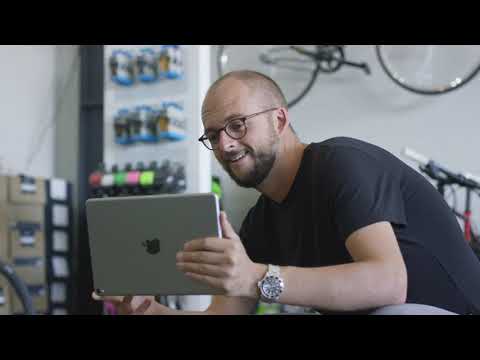With January traditionally a bumper month for returns in retail, we look at some trends in this area, and some ways that retailers can try to reduce returns and keep customers happy.
First, some stats on ecommerce returns:
- 89% of consumers have returned an online purchase in the last three years, and 41% but the same item in different sizes or types with the intent to return. (Shopify Holiday Ecommerce Returns Guide).
- Returns for items bought online are generally higher than those purchased in bricks and mortar stores (aggregated returns rates from Forrester):


As the stats show, returns are a fact of life for online retailers, and some level of returns has to be accepted.
Returns are a pain for retailers, and the cost be be counted in several ways:
- The refund cost of the lost sale.
- Lost costs of shipping items, and potential costs of collecting returns.
- Lower margins on returns. Returned items may not always be sold for the same amount. They may be out of season once returned, or my need to be discounted.
- Time and resources dealing with returns. This could mean logistical resources processing returns, or customer service interactions to arrange returns.
- Impact on brand image due to unhappy customers.
So it’s not about preventing all returns but avoiding unnecessary returns. For example, if customers aren’t fully informed about a product and choose to return, this is avoidable.


It’s also about handling returns and maintaining profitability, so decisions about charging for returns need to be balanced with the risks of deterring customers from making a purchase in the first place.
There are no easy answers, but retailers can do a lot to avoid needless returns activity, and to handle returns in a way that keeps most customers happy.
Here are some suggestions…
Easy Returns Policies
It may be tempting to reduce returns by making it more difficult for shoppers, but this can be counter-productive.
According to Shopify stats, 83% of consumers read returns policies before they buy, and most say the costs of returns can prevent them from buying at all.
More generous returns policies encourage customers to make a purchase in the first place. They buy more confidently knowing they can return without hassle or extra cost.
Returns can work well from a customer retention perspective too. 77% of returns come from repeat shoppers, while 72% of consumers say they spend more with site that make returns easy.


The example of Zappos is relevant here. This is a retailer which has built a reputation for great customer service, and its returns policy (summarized above) is a key part of this.
According to CEO Tony Hsieh, this pays off for the retailer:
“We also offer a 365-day returns policy for people who have trouble making up their minds. (Originally our returns policy was only 30 days, but we kept increasing it at the urging of our customers, who became more loyal as we lengthened the returns period.)
Our returns run high—more than a third of our gross revenue—but we’ve learned that customers will buy more and be happier in the long run if we can remove most of the risk from shopping at Zappos.”
Research from the University of Dallas reinforces this view. It found that, while more free and easy returns policies did correlate with more returns, it was even more strongly correlated with an increase in purchases.
The same study found that longer returns policies, with time limits more than 30 days after purchase, can actually reduce returns.
This is attributed to the ‘endowment effect‘, in which people value things more once they own them. They become more attached to a product once they’ve had it for some time, while the longer time frame means there’s less urgency when deciding whether or not to keep a product.
Reduce Mistakes Which Lead to Returns
When discussing online returns, there’s often talk of fickle customers frequently changing. their minds or over-ordering.
This does happen, but it’s important to recognise that many returns happen because of mistakes made by retailers.
According to Chain Store Age, 63% of returns are the result of errors made by the retailer.
- 23% of returns happen because the wrong item was shipped.
- 20% of online returns are due to the consumer receiving a damaged or faulty item.
- 23% happen because the product looked very different from that displayed online.
Product Photos and Videos
If people are returning goods because products look different than they did online, then it suggests that some sites aren’t using product photography very well.
Photography on product pages should help to sell products by showcasing them effectively, but also needs to give people enough information to understand the product before they buy it.
This includes showing products from many different angles, and allowing people to zoom in, so they can get the best possible idea.


It’s also good to use images to demonstrate how products work, or how they can be useful.
This is a great example from Bellroy. It has 10 different images to display all aspects of the bag; what it looks like from different angles, how much you can fit into it or how it looks on a model.


Videos can also be used as a useful way to describe and demonstrate product features, as AO.com does with some of its electrical appliances.


Clear and Well Presented Product Information
The amount of information people need will vary by products, but retailers do need to give shoppers all they need to make a well informed decision to buy.
Customers who make on informed decision, having considered the product carefully, will be less likely to need to return items.
Home Depot does a great job here, presenting technical details well, and also laying out the key data and selling points in a comparison table.


Home Depot also allows customers to ask direct questions about products, and displays these on product pages.
It’s a great way to ensure that customers can find any information not already shown on the page.


Try Before You Buy
This is something which has become more popular recently, especially for fashion brands.


It helps shoppers to get around the problem of not been able to try items on before they decide. It can also mean a more frictionless
According to Brightpearl, 76% of consumers said they would ‘definitely’ or ‘maybe’ purchase more items if they were offered try before you buy.
Some retailers fear that this model will lead to more returns, and this is possible if customers are ordering multiple items to find the one that suits them best.
However, many retailers will be able to adapt to this model (and many have done this successfully) and find ways to process returns and maintain profit margins.
Use Customer Reviews
Consumer reviews are another method of ensuring that customers make purchases with plenty of information about the product they’re buying, and how it can work for them.
Indeed, A Boston University study found that positive reviews can lead to lower returns rates and increased repeat purchases.
The key is to give shoppers plenty of information around reviews, especially for more complex products.
For example, Home Depot lays review scores out very clearly and shows different facets, such as quality and value for money, and type of reviewer, which can help them make a more informed decision.


Using Technology
If customers can’t try before the buy, then technology can help them to fit the best product, or the best fit for them.
For example, Warby Parker’s iPhone app uses the depth-sensitive camera to scan and recommend the best frames for the customer’s face.


Augmented Reality can also help here, and we’ll see more retailers adopting this as way way to both increase sales and reduce returns rates.
For example purecycles.com can now use the iPhone browser to show shoppers its products in AR.
This means people can try the bikes for size before they buy them, ensuring they’re the correct size for children, or perhaps that they’ll fit in the customer’s storage space.
Speak to an expert
Learn how to convert your online audience into revenue with our experts.
Graham Charlton
Graham Charlton is Editor in Chief at SaleCycle. He's been covering ecommerce and digital marketing for more than a decade, having previously written reports and articles for Econsultancy. ClickZ, Search Engine Watch and more.









![Valentine’s Day Ecommerce Tips and Trends [2024 Strategy]](https://www.salecycle.com/wp-content/uploads/2019/01/valentines-ecommerce-1.png)




![How SaleCycle helped Vodafone increase their online sales by an additional 2,000 additional sales per month [Extended Version]](https://www.salecycle.com/wp-content/uploads/2023/08/vodafone-banner.webp)




